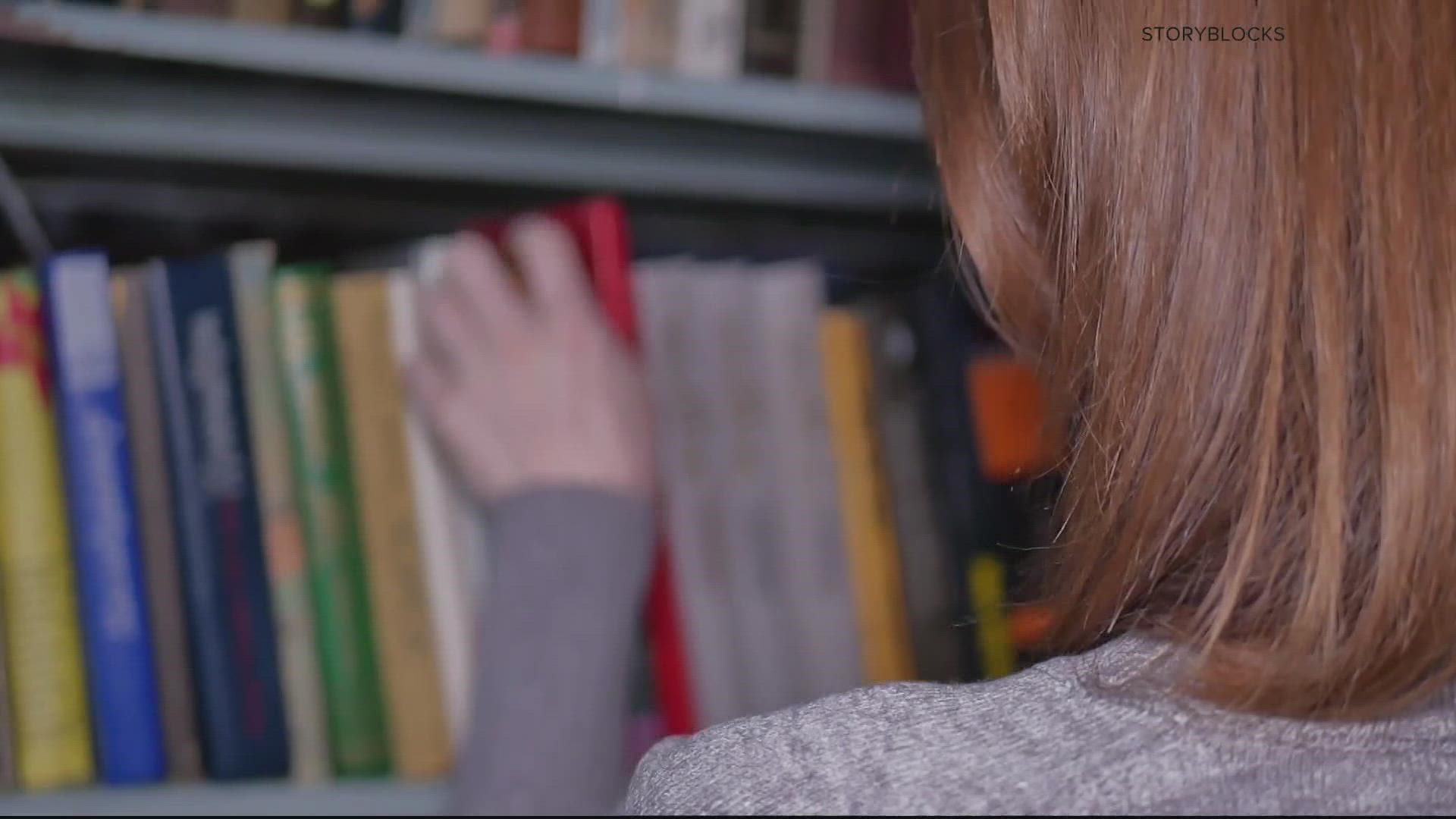WASHINGTON — Sept. 18-24 is designated as “Banned Books Week,” when readers are encouraged to check out books that someone doesn’t want on the shelves.
THE QUESTION:
How many books are getting formally pushed out of schools and libraries, where is it happening, and why?
SOURCES:
- The “State of America’s Libraries Special Report” and data from The American Library Association
- PEN America, a literature and free-expression advocacy non-profit that’s studied book bans extensively
- Will Creeley, legal director for the Foundation for Individual Rights and Expression
WHAT WE FOUND:
If it feels like you’re hearing more and more about libraries and school boards removing certain reading material from shelves and curriculum–the groups that keep track of this kind of thing would tell you, you’re right.
The American Library Association reported this spring the largest number of attempted book bans since it began tracking that 20 years ago…far overshadowing previous years’ numbers, and more than the previous two years combined.
The ALA report lists “729 challenges to library, school, and university materials and services, representing challenges to 1,597 individual book titles.” That’s compared to 273 in 2020, 377 in 2019, and 483 in 2018.
“There's always been some amount of book banning,” said Will Creeley, legal director for the Foundation for Individual Rights and Expression. “But this is unprecedented. It is a tsunami, it is an avalanche of censorship.”
PEN America’s Index of School Book Bans lists 1,648 unique titles challenged from July 2021 to June 2022 in more than 2,500 instances nationwide.
Texas leads states in book challenges on that list, followed by Florida and Pennsylvania.
In the last year in the DMV, Fairfax County, Loudoun County, and Spotsylvania County Public Schools have all taken books off the shelves, including titles with LGBTQ themes.
Historically, book bans have often centered around language, or what might have been deemed “mature topics,” or anti-Christian messaging, but targeted books increasingly center around characters and issues “of people who are gay, trans, Black, Indigenous, people of color, immigrants, and refugees,” according to the ALA.
Five of the ten most challenged books for the last year deal with LGBTQ issues, and PEN America’s index shows schools are disproportionately banning books with LGBTQ+ themes and characters and “characters of color.”
Creeley says it’s a precedent that could impact a variety of beliefs.
“I think no matter what your beliefs, no matter what your party affiliation, you should be very nervous because that axe swings both ways,” he said. “Today, folks are coming for books dealing with the LGBTQ community, tomorrow, they'll be coming for books dealing with faith, or you know, in some instances, we even saw the Bible get pulled off the shelves. So once you start banning books, it is a very slippery slope.”
The PEN America Report found sometimes books are pulled in political moves from school board officials or even those high up in state government. Most of these book challenges come from local action and advocacy parent groups, typically conservative, aiming to amplify parents’ voices in schools over the last few years.
Watch Next: Verify: Did Loudoun County ban Dr. Seuss books?

